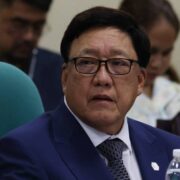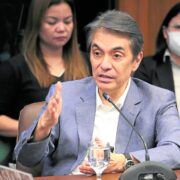GIR hits record-high $112B

Inflows from fresh foreign borrowings of the Marcos administration and an increase in the value of gold held by the Bangko Sentral ng Pilipinas (BSP) pushed up the Philippines’ international reserves to a new record high, with the start of a global monetary easing cycle seen helping the country accumulate more buffer funds.
Latest data from the BSP released on Monday showed that the country’s gross international reserves (GIR) had soared to an all-time high of $112 billion in September, already surpassing the $106-billion GIR projection of the central bank for 2024.
The GIR serves as the country’s buffer against external shocks. The reserve assets consist of foreign investments of the central bank, gold and foreign exchange as well as borrowing authority with the International Monetary Fund and the country’s contributions to the same Washington-based institution.
Dissecting the BSP’s report, foreign exchange nearly tripled month-on-month to $2 billion in September, posting the largest sequential growth among the GIR components. The central bank attributed this to inflows from the recent US dollar bond sale of the government, which raised $2.5 billion from offshore creditors.
More than adequate
Rallying global prices of gold amid a weakening US dollar lifted the value of the BSP’s holdings of the precious metal by 6.2 percent to $11 billion, helping the Philippines fatten up its buffer funds. Meanwhile, offshore investments of the BSP, which accounted for the bulk of the entire GIR, went up by 2.4 percent to $94.5 billion.
Overall, the record-high dollar reserves in September were enough to pay for 8.1 months’ worth of imports of goods. The buffer funds were also about 6.3 times the country’s short-term external debt based on original maturity and 4.4 times based on residual maturity.
By convention, GIR is viewed to be adequate if it can finance at least three months’ worth of the country’s imports of goods and payments of services and primary income.
The reserves are also considered adequate if they provide at least 100 percent cover for the payment of the country’s foreign liabilities—both from the public and private sectors—falling due within the immediate 12-month period.
Emilio Neri Jr., lead economist at Bank of the Philippine Islands, said the start of the easing cycle of the US Federal Reserve would drive more foreign inflows to the Philippines, helping the country further build up its GIR.
“With more US rate cuts expected, the BSP can accumulate further as long as it doesn’t cut the [local policy rate] much more aggressively than the Fed,” Neri said.





















